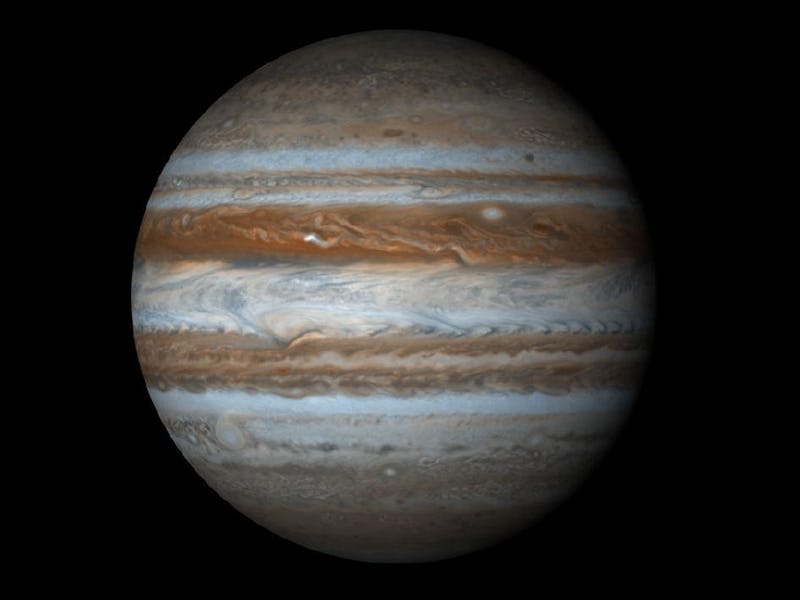Slow-motion video captures the exact moment a meteor collides with Jupiter
"These detections are extremely rare."

Last month, an amateur astronomer gazing out at Jupiter from a telescope in his backyard caught a glimpse of something incredible. A sudden, bright flash of light appeared for 1.5 seconds on the lower, left side of the planet.
A team of astronomers gathered to analyze the footage, and this group has now identified the source of the impact: a small, stony meteor that crashed right into Jupiter.
The results were announced Monday at the joint meeting of the European Planetary Science Congress and Division for Planetary Sciences held in Geneva, Switzerland.
The meteor in question was estimated to be between 12 and 16 meters in diameter, weighing 450 tons in mass. Although it is relatively small in the cosmic sense, it released an amount of energy equivalent to a the explosion of 240 kilotons of TNT when it hit the gas giant.
Watch this gif for long enough, and you will see the bright flash caused by the impact at the lower, left side of Jupiter.
Ethan Chappel first captured the video observation on August 7, and later analyzed it using a piece of open source software called DeTeCt that was designed specifically for impact flashes on Jupiter. And this was the first impact flash detected using the software.
“These detections are extremely rare because the impact flashes are faint, short and can be easily missed while observing the planets for hours,” Marc Delcroix, a French amateur astronomer and co-developer of DeTeCt, said in a statement
However, this particular flash was the second brightest one observed from Jupiter, so it was sort of hard to miss.
This image, generated by the DeTeCt software, is the result of analyzing several video observations and minimizing atmospheric disturbances to get a clear image of the meteor collision.
The first planetary crash observed was in 1994 when bits from a comet pounded Jupiter fragment by fragment, leaving scars on the planet’s surface. Being the largest planet in our solar system, with a diameter that’s 11 times larger than Earth’s, Jupiter is more likely to have cosmic fender benders due to its massive gravitational force.
Physicist Ricardo Hueso, Ph.D., who also developed the software DeTeCt, said that there were six impact flashes observed in the past 10 years in Jupiter’s atmosphere, while other object impacts go undetected.
The leftmost image is a composite made from several videos of the impact, the center one is just one of the reference images, and the right one is just the flash at its brightest moment.
“Most of these objects hit Jupiter without being spotted by observers on Earth. However, we now estimate 20-60 similar objects impact with Jupiter each year,” Hueso said in the statement. “Because of Jupiter’s large size and gravitational field this impact rate is ten thousand times larger than the impact rate of similar objects on Earth.”
The team behind DeTeCt hopes that this discovery encourages more amateur astronomers to use the open source software to make similar detections.